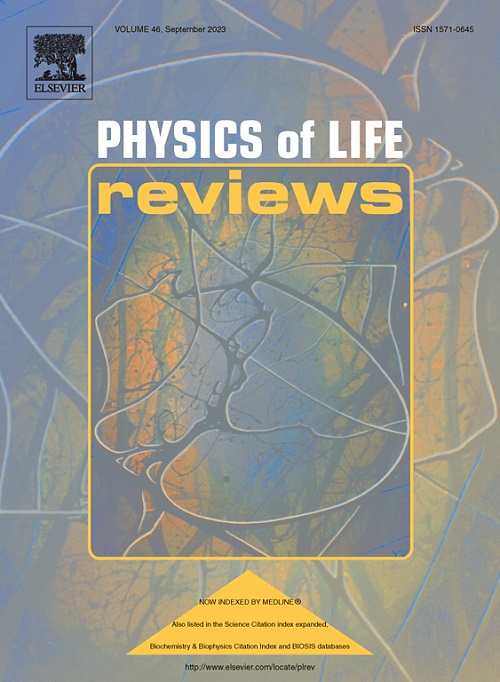通过艺术体验的不同结果来构建幸福和社会挑战机制?简要回顾一下VIMAP。
IF 13.7
1区 生物学
Q1 BIOLOGY
引用次数: 0
摘要
在这篇简短的文章中——很高兴由《生命物理学评论》20周年提供——我们借此机会反思我们早期发表的论文,该论文介绍了一个理论框架,VIMAP(维也纳综合模型(自上而下和自下而上的过程)艺术感知;(Pelowski et al.,[1])),这已经成为组织、预测和实证调查微妙、多元视觉艺术体验的主要基础。我们回顾了最初的模型和它的假设,特别是当它们考虑到不同的“结果”时,我们认为这些结果可能提供了一种超越的、共享的艺术体验的上层建筑,这种艺术体验贯穿了观众、环境和艺术品的个人会议。在本论文中,我们考虑这些结果是否也可以成为一种有用的工具,用于满足多个艺术相关领域的新需求,这些领域自最初发表以来一直在加强,将艺术应用于福祉、社会挑战和健康。所有这些都需要一个框架来更好地理解和测试以个人为中心的艺术体验的细微特征。我们简要地考虑了这些新主题如何适用于VIMAP[2]。在我们团队提供的新证据的指导下,对特定的结果类型及其含义进行了自下而上的验证,我们提供了一套工作建议,据此我们可以将幸福感或态度/行为变化相关目标与特定的VIMAP结果联系起来,我们认为这可能为未来的研究提供强大的机制结构。本文章由计算机程序翻译,如有差异,请以英文原文为准。
Framing wellbeing and societal challenge mechanisms via distinct outcomes of art experience? A brief revisit to the VIMAP
In this brief contribution—happily afforded by the 20th anniversary of Physics of Life Reviews—we take the opportunity to reflect on our earlier published paper, which had introduced a theoretical framework, the VIMAP (Vienna Integrated Model of (Top-Down and Bottom-up processes in) Art Perception; (Pelowski et al., [1])) that has come to represent a major basis for organizing, anticipating, and empirically investigating the nuanced, multivariate visual art experience. We look back at the original model and its hypotheses, especially as these regard distinct "outcomes," which we had argued may provide a superstructure of supraordinate, shared varieties of art experience detected across individual meetings of viewer, context, and artworks. In the present paper we consider whether these outcomes could also be a useful tool for approaching new demands across multiple art-related areas that have strengthened in the years since the original publication regarding applying the arts to wellbeing, societal challenges, and health. All of which require a framework for better understanding and testing the nuanced features of individual-centered art experience. We briefly—and admitedly very speculatively—consider how these new topics could be fit to the VIMAP [2]. Guided also by new evidence from our team that has provided a bottom-up verification of the specified outcome types and their implications, we provide a working set of suggestions whereby we might connect wellbeing- or attitude/behavioral change-related targets to the specific VIMAP outcomes, which we argue may provide a powerful mechanistic structure for future research.
求助全文
通过发布文献求助,成功后即可免费获取论文全文。
去求助
来源期刊

Physics of Life Reviews
生物-生物物理
CiteScore
20.30
自引率
14.50%
发文量
52
审稿时长
8 days
期刊介绍:
Physics of Life Reviews, published quarterly, is an international journal dedicated to review articles on the physics of living systems, complex phenomena in biological systems, and related fields including artificial life, robotics, mathematical bio-semiotics, and artificial intelligent systems. Serving as a unifying force across disciplines, the journal explores living systems comprehensively—from molecules to populations, genetics to mind, and artificial systems modeling these phenomena. Inviting reviews from actively engaged researchers, the journal seeks broad, critical, and accessible contributions that address recent progress and sometimes controversial accounts in the field.
 求助内容:
求助内容: 应助结果提醒方式:
应助结果提醒方式:


